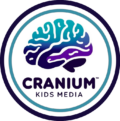As a parent or teacher of a child with executive function challenges, you may have noticed that your kid struggles with tasks that require organization, planning, or self-regulation. These skills, known as executive function skills, are important for helping us achieve our goals and succeed in school, work, and other areas of life.
Before we get into how to help children with executive function challenges build these skills, let’s take a moment to reflect on our own habits and strategies for achieving our goals. Do you often use mental images or visual representations to help you stay focused and motivated? For example, do you picture yourself crossing the finish line of a marathon as you train, or do you visualize the completed puzzle as you work on it piece by piece?
Using mental images or visual representations to support our goals is a common strategy that many of us use without even realizing it. It can be especially helpful when we are working towards a larger, long-term goal, as it can help us stay focused and motivated and can also serve as a guide for breaking down the goal into smaller, more manageable steps.
But here’s the thing: for children with executive function challenges, using mental images or visual representations to support their goals may not come as naturally. And that’s where the technique of a “future picture” can be a total game-changer. A future picture is a visual representation of a specific goal or outcome in the future that can be used to help children with executive function challenges stay focused and motivated as they work towards their goal.
So, let’s talk about the benefits of using a future picture. First of all, it can help your child focus on a long-term goal, rather than getting bogged down in short-term challenges or distractions. This can be especially important for children who have difficulty with focus or impulse control.
Second, a future picture can help your child develop problem-solving and planning skills. By working with your child to create a plan to achieve their goal, you can help them learn how to break down a larger goal into smaller, more manageable steps. This can be an important skill for children who have difficulty with organization or task completion.
And finally, a future picture can be a powerful motivator. By helping your child see the end result of their hard work and effort, you can help them stay motivated to continue working towards their goal.
So, how do you use a future picture with your child? It’s actually pretty simple.
- Start by helping your child identify a specific goal or outcome they would like to work towards. It can be helpful to choose a goal that is both achievable and motivating for your child.
- Create a visual representation of their goal, such as a photo or sketch of the finished product, to help them stay focused and on track
- Next, work with your child to create a plan for achieving their goal. This might involve breaking the goal down into smaller steps, setting deadlines, or identifying any resources or support they might need.
- As your child works towards their goal, encourage them to visualize the end result and use it as a source of motivation. .
Using a future picture can be a valuable tool for helping children with executive function challenges build important skills and achieve their goals. By focusing on a long-term goal and creating a plan to achieve it, you can help your child stay focused, motivated, and on track. So the next time you or your child set a goal, consider using a future picture to help support the process and increase the chances of success.

